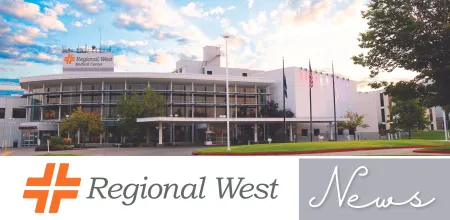Regional West Air Link flight team first in Nebraska to use night vision goggles

Scottsbluff, NE – The newly announced partnership between Regional West Air Link and Med Trans Corporation has already begun to bear fruit. As a result of the partnership, Air Link and Med Trans will introduce a Bell 407 helicopter for emergency medical air transport.
With the newer aircraft comes newer technology. Equipped with the latest in safety features, Air Link will be the first civilian medical transport program in Nebraska to actively use night vision goggles (NVG) along with other valuable safety tools and technology.
In 2008, a series of accidents nationwide drew attention to the medical transport industry as a whole. As a result Congress is expected to discuss mandatory safety measures that were previously voluntary. Air Link and Med Trans Corporation are taking a proactive stance and are far ahead of the curve in providing patient and crew safety in the standard equipment.
“The safety of our crew and patients during each and every flight colors all decisions made regarding our service.” says Susan Cozine, Director of Air Link, Emergency Department and Intensive Care. “From highly-visible paint schemes, to equipment and flight training requirements, and our policies for accepting missions, the desire for everyone to return home safely drives research based choices.”
Night vision goggles were first widely used by the military, but have made a successful transition into the civilian air transport arena. They enhance vision of dark nighttime landscapes by magnifying star or moonlight to illuminate the ground, as well as natural and man made obstacles that could cause problems in flight. “The goggles can illuminate natural terrain, things like basic power poles or towers that were previously very difficult to see in low light or dark situations,” says Air Link Base Manager and pilot Gil Watkins. “We fly half of our missions at night, and this technology helps us to do our jobs better and more safely than we could before.”
The goggles are incorporated onto the flight team’s helmets and run from a battery pack attached to the back of the helmet. Each crew member, in addition to the pilots, spends multiple hours training on the art of vision with the goggles. “It’s an adjustment, but one we’re willing to make in return for the added safety of our crews and our patients,” said Chief Flight Nurse Laurie Soper. “We’re honored to be the first in the state to have this technology and look forward to incorporating the goggles into our existing safety protocols and training.”
Covering over 23,000 square miles in Nebraska alone, the helicopter is an integral part of the only comprehensive trauma system west of Kearney. The system serves important volunteer and paid ground crews, and medical staff in Critical Access Hospitals in the panhandle, eastern Wyoming, southern South Dakota and northeastern Colorado, linking them to the referral center and its specialists at Regional West Medical Center.
Regional West Health Services, with over 1,800 employees, provides comprehensive and innovative health care services for the people and communities of western Nebraska and the neighboring states of Colorado, South Dakota and Wyoming. With over 110 active physicians, 95 percent of whom are board certified or board eligible, plus an additional 25 consulting specialists, we offer care that spans more than 30 medical specialties. Regional West Medical Center, a subsidiary of Regional West Health Services, is accredited by The Joint Commission and is one of three Level II Trauma Centers in the state of Nebraska.








